Description
Chapter 1: Pharmacology and the Nursing Process in LPN Practice
Edmunds: Introduction to Clinical Pharmacology, 8th Edition
MULTIPLE CHOICE
1. A patient states that he occasionally takes an over-the-counter laxative for constipation. What is this information an example of?
a. Objective data
b. Inspection
c. Subjective data
d. Alternative therapy
ANS: C
Subjective data describes the information given by the patient or family and includes the concerns or symptoms felt by the patient.
DIF: Cognitive Level: Apply REF: p. 3 OBJ: 2
TOP: The Nursing Process KEY: Nursing Process Step: Assessment
MSC: NCLEX: Physiological Integrity
2. Which represents the correct order of the steps of the nursing process?
a. Assessment, diagnosis, planning, implementation, evaluation
b. Planning, assessment, diagnosis, implementation, evaluation
c. Assessment, planning, implementation, diagnosis, evaluation
d. Diagnosis, planning, implementation, evaluation, assessment
ANS: A
The nursing process consists of five major steps in this order: assessment, diagnosis, planning, implementation, evaluation.
DIF: Cognitive Level: Remember REF: pp. 1-2 | Fig. 1-1
OBJ: 1 TOP: The Nursing Process KEY: Nursing Process Step: N/A
MSC: NCLEX: N/A
3. The statement, “The patient will be able to self-administer an aerosol nebulizer treatment by the date of discharge,” is an example of which step of the nursing process?
a. Implementation
b. Diagnosis
c. Evaluation
d. Planning
ANS: D
The patient-focused care plan should include any medications that will be given on either a short-term or a long-term basis. For example, goals may be written to apply ointments or patches or to show the patient how he can give himself an aerosol nebulizer treatment.
DIF: Cognitive Level: Apply REF: pp. 4-5 OBJ: 4
TOP: The Nursing Process KEY: Nursing Process Step: Planning
MSC: NCLEX: Physiological Integrity
4. A medication should be withheld when which is true?
a. The physician omits the trade name in the order.
b. There has been a change in the patient’s condition.
c. The medication improves the patient’s symptoms.
d. The patient is asleep.
ANS: B
You must use good judgment in carrying out a medication order. If, in your judgment, there has been a change in the patient’s condition that raises concerns about whether a medication should be given, it should be withheld (not given) until your concerns can be answered by the patient’s physician.
DIF: Cognitive Level: Remember REF: p. 5 OBJ: 3
TOP: Medication Administration KEY: Nursing Process Step: Planning
MSC: NCLEX: Physiological Integrity
5. How would a nurse ensure that the medication order is accurate?
a. By checking the medication record with the Kardex file
b. By comparing the physician’s order with the medication history
c. By comparing the physician’s order to the chief complaint
d. By checking the medication record with the original physician’s order
ANS: D
Once the health care provider orders the medication, the nurse must verify that the order is accurate. Checking the medication chart or medication record with the physician’s original order usually does this.
DIF: Cognitive Level: Remember REF: p. 5 OBJ: 3
TOP: Medication Administration KEY: Nursing Process Step: Planning
MSC: NCLEX: Physiological Integrity
6. What do the six “rights” of medication administration include?
a. Drug, time, dose, doctor, route, and documentation
b. Drug, time, dose, patient, route, and documentation
c. Drug, diagnosis, time, patient, route, and documentation
d. Dose, time, doctor, patient, route, and drug
ANS: B
There are six “rights” of medication administration that the nurse must always keep in mind. You must give the right drug at the right time, in the right dose, to the right patient, by the right route, and use the right documentation to record that the dose has been given.
DIF: Cognitive Level: Remember REF: p. 6 OBJ: 3
TOP: Medication Administration KEY: Nursing Process Step: Implementation
MSC: NCLEX: Physiological Integrity
7. Which nursing action should ensure that a medication is given to the right patient?
a. Checking the patient’s identification bracelet
b. Verifying the medication record with the chart
c. Verifying the room number with the chart
d. Asking the patient to state his or her birth date and Social Security number
ANS: A
Each patient should be asked his or her name as the nurse checks the identification bracelet. In a hospital setting, medication should never be given to a patient who is not wearing an identification bracelet.
DIF: Cognitive Level: Understand REF: p. 7 OBJ: 3
TOP: Medication Administration KEY: Nursing Process Step: Implementation
MSC: NCLEX: Safe, Effective Care Environment
8. The nurse should document drug administration at which time?
a. At the end of each shift
b. As soon as possible after administration
c. Just before administration
d. Any time during the nurse’s shift
ANS: B
A note about how and when the nurse gave the drug should be made on the patient’s chart as soon as possible after the drug is administered. There is a greater chance of error if meds are not charted as soon as they are given.
DIF: Cognitive Level: Remember REF: p. 8 OBJ: 3
TOP: Medication Administration KEY: Nursing Process Step: Implementation
MSC: NCLEX: Physiological Integrity
9. Which nursing action is an example of the evaluation step in medication administration?
a. Obtaining the clotting time results of a patient on an anticoagulant
b. Asking the patient if he or she has any allergies to medications
c. Checking a drug reference to verify the action of the drug
d. Explaining to the patient the possible side effects of the drug
ANS: A
Evaluation of what happens when the nurse administers a drug helps the health care provider decide whether to continue the same drug or make a change. After administering a drug, an important role of the nurse is following up to evaluate for the desired action (e.g., obtaining results of clotting time tests ordered by the physician for a patient on an anticoagulant).
DIF: Cognitive Level: Apply REF: p. 8 OBJ: 4
TOP: Medication Administration KEY: Nursing Process Step: Evaluation
MSC: NCLEX: Physiological Integrity
10. A nurse must check for which two specific types of patient responses to drug therapy?
a. Action coding and action transferred
b. Drug feedback and drug uptake
c. Therapeutic effects and adverse effects
d. Uptime levels and downtime levels
ANS: C
The nurse checks for two types of responses to drug therapy: therapeutic effects and adverse effects.
DIF: Cognitive Level: Remember REF: p. 8 OBJ: 4
TOP: Medication Evaluation KEY: Nursing Process Step: Evaluation
MSC: NCLEX: Physiological Integrity
11. Which is never administered if prepared by another nurse?
a. Written orders
b. Daily reports
c. Diet selections
d. Medications
ANS: D
It must be stressed that the nurse must never give medication prepared by another nurse. Medications should not be given and orders not carried out.
DIF: Cognitive Level: Remember REF: p. 8 OBJ: 3
TOP: Record Keeping KEY: Nursing Process Step: N/A
MSC: NCLEX: N/A
12. As an LVN/LPN, the nurse’s role in the nursing process is to gather information and work with the patient. In carrying out this role, which task can be delegated to the LPN/LVN nurse?
a. Interviewing the patient on admission
b. Planning and evaluating the patient’s care
c. Checking vital signs and medication response
d. Carrying out all steps of the nursing process
ANS: C
It is usually the LPN/LVN who takes vital signs, checks a patient’s response to medications and treatments, and monitors symptoms the patient is having.
DIF: Cognitive Level: Understand REF: p. 2 OBJ: 1
TOP: Nursing Process KEY: Nursing Process Step: Implementation
MSC: NCLEX: Physiological Integrity
13. When information is reported by the patient, it is considered to be subjective data. Which statement is considered to be objective data?
a. The patient tells the nurse, “I have pain in my lower back.”
b. Mr. Williams tells the nurse he is having trouble catching his breath.
c. Miss Sims has told the doctor she has no history of allergies to antibiotics.
d. The patient’s skin is warm and dry.
ANS: D
Objective data are physical findings the nurse can see during careful inspection, palpation, percussion, and auscultation.
DIF: Cognitive Level: Understand REF: p. 3 OBJ: 2
TOP: Nursing Process KEY: Nursing Process Step: Implementation
MSC: NCLEX: Physiological Integrity
14. The LPN/LVN is a member of the health care team and assists the RN in following a plan of care once the nursing diagnoses are shared with the team. When developing a nursing diagnosis, it can sometimes be difficult to get accurate answers from patients. Which category of patients is most likely to present a problem in this regard?
a. Patients who are elderly and sick
b. Patients only in for 24-hour admissions
c. Parents whose children are patients
d. Bilingual parents whose children are patients
ANS: A
Getting accurate answers to questions may be harder with children, elderly patients, or people whose language or culture is different from yours.
DIF: Cognitive Level: Understand REF: p. 4 OBJ: 4
TOP: Diagnosis KEY: Nursing Process Step: Diagnosis
MSC: NCLEX: Physiological Integrity
15. In utilizing the collected information about the patient’s condition before giving medications, what are some important factors to consider?
a. The color of the medication in pill form
b. Who can administer this medication
c. Other drugs that may affect the medication’s route
d. The reason and goal of the medications given
ANS: D
In planning to give a medication, the LPN/LVN must understand the reason or goal for each medication to be given; that is, what is this drug supposed to do for the patient?
DIF: Cognitive Level: Apply REF: pp. 4-5 OBJ: 4
TOP: Planning KEY: Nursing Process Step: Planning
MSC: NCLEX: Physiological Integrity
16. The nurse collected information for a patient at the beginning of the shift and found that she had a blood pressure of 198/100. After reporting this information to the RN team leader, the nurse gave the patient the scheduled medication, amlodipine (Norvasc), 5 mg PO. Which is considered an appropriate evaluation of the patient’s response after this medication has been administered?
a. The therapeutic goal of the drug is met.
b. The therapeutic effects and adverse effects are checked.
c. The medication was given 30 minutes late.
d. The medication was given 30 minutes early.
ANS: B
The nurse checks for two types of responses to drug therapy: therapeutic effects and adverse effects. Follow-up blood pressure should be checked to determine if the drug is effective.
DIF: Cognitive Level: Apply REF: p. 8 OBJ: 1
TOP: Medication Response KEY: Nursing Process Step: Evaluation
MSC: NCLEX: Physiological Integrity
17. Many medications have names that sound or look alike. What should a nurse administering two such similar medications do?
a. Check the spelling and name of each medication.
b. Check the physician’s order only.
c. Ask the team leader to check the order with you.
d. Ask the patient which one of the medications she takes.
ANS: A
It is important to check the spelling of the name and the dose of each medication before any medication is given.
DIF: Cognitive Level: Apply REF: p. 6 OBJ: 3
TOP: The Right Drug KEY: Nursing Process Step: Implementation
MSC: NCLEX: Physiological Integrity
18. Medications may come in a unit-dose package with a bar code that is scanned by a computer. Which process should the nurse perform before administering unit-dose medication?
a. Remove each medication from the packaging.
b. Check the medications in alphabetic order.
c. Read the drug label at least three times.
d. Ask the patient to name each of his or her medications.
ANS: C
Irrespective of the way the medication comes, the nurse must read the drug label at least three times: (1) before taking the drug from the unit-dose cart or shelf, (2) before preparing or measuring the prescribed dose of medication, and (3) before putting the medication back on the shelf or just before opening the medication at the time you give it to the patient.
DIF: Cognitive Level: Apply REF: p. 6 OBJ: 3
TOP: The Right Drug KEY: Nursing Process Step: Implementation
MSC: NCLEX: Physiological Integrity
19. In some settings, identifying the patient who is at risk for medication error (confused or critically ill) can be accomplished by which process?
a. Asking the patient his or her name and room number
b. Asking the patient’s roommate for the patient’s name
c. Carrying the patient’s chart with you to the room
d. Using the portable computer to scan the identification bracelet
ANS: D
The use of a portable computer to scan the patient’s identification bracelet and the drug is helpful in making sure the correct patient gets the correct medication.
DIF: Cognitive Level: Understand REF: p. 7 OBJ: 3
TOP: The Right Patient KEY: Nursing Process Step: Implementation
MSC: NCLEX: Physiological Integrity
20. It is important for the LPN/LVN to be a part of the evaluation process when giving the patient medications. Which factor is considered to be an important part of the process of evaluating medications once they are given?
a. Asking the patient what the medication tasted like
b. Asking the patient if swallowing all of the medications at once helped
c. Evaluating the therapeutic effects and the adverse effects of the medication
d. Evaluating whether more scheduled medication is needed
ANS: C
The nurse checks for two types of responses to drug therapy: therapeutic effects and adverse effects.
DIF: Cognitive Level: Apply REF: p. 8 OBJ: 4
TOP: Evaluating Response to Medication
KEY: Nursing Process Step: Evaluation MSC: NCLEX: Physiological Integrity
21. An LVN/LPN works on a very busy 35-bed medical-surgical unit. The RN team leader gives her a syringe with “pain medication” in it and asks the LPN/LVN nurse to administer this medication to a patient. What should be the nurse’s first action?
a. Assist the team leader by giving the medication as requested for this time only.
b. Administer the medication this time because it is an emergency.
c. Take time and prepare the medication herself and give as prescribed.
d. The LVN/LPN doesn’t have to do anything; it is not her patient.
ANS: C
It must be stressed that the nurse never gives medication prepared by another nurse. Even when a nurse is very busy, when there is an emergency, or when the nurse is interrupted, the nurse cannot assume that all the “rights” are followed unless the person who prepared the medication is the one who gives the medication.
DIF: Cognitive Level: Understand REF: p. 8 OBJ: 4
TOP: The Right Documentation KEY: Nursing Process Step: Implementation
MSC: NCLEX: Physiological Integrity
22. An LVN/LPN is evaluating the response of a patient 30 minutes after receiving an antihypertensive medication administered by the RN team leader. The LPN/LVN assesses the patient’s blood pressure and notes the patient is now hypotensive. What is this is an example of?
a. An adverse effect
b. A desired response to a medication
c. A therapeutic effect
d. An allergic reaction
ANS: A
An adverse effect is seen when patients do not respond to their medications in the way they should or develop new signs or symptoms. When a patient has an adverse effect, the LPN/LVN should report this immediately to the RN or health care provider.
DIF: Cognitive Level: Understand REF: p. 8 OBJ: 4
TOP: Evaluating Medication Response KEY: Nursing Process Step: Evaluation
MSC: NCLEX: Physiological Integrity
23. The LVN/LPN is preparing to administer insulin to a patient with diabetes. What should the nurse assess prior to administering the insulin?
a. Blood pressure
b. Blood glucose
c. Heart rate
d. Temperature
ANS: B
The LVN/LPN should assess the patient’s blood glucose to establish a baseline prior to administering the insulin. A baseline blood glucose may influence the decision to hold or administer the insulin based on the results.
DIF: Cognitive Level: Apply REF: pp. 2-4 OBJ: 4
TOP: Assessment KEY: Nursing Process Step: Assessment
MSC: NCLEX: Physiological Integrity
MULTIPLE RESPONSE
24. After drug administration, the nurse should monitor for which responses to drug therapy? (Select all that apply.)
a. Expected outcomes
b. Premedication teaching
c. Allergic responses
d. Adverse reactions
e. Side effects
ANS: A, C, D, E
It is important to monitor the patient for expected outcomes, allergic responses, and any adverse reactions or side effects.
DIF: Cognitive Level: Understand REF: p. 8 OBJ: 4
TOP: Medication Response KEY: Nursing Process Step: Evaluation
MSC: NCLEX: Physiological Integrity
25. When administering medication to a patient whose dose has a bar code on the medication wrapper that must be scanned by the computer, the nurse knows that which protocols must be followed? (Select all that apply.)
a. Scan the bar code with the computer; there is no need to do anything else.
b. Check the drug before removing it from the unit-dose cart.
c. Check the dose before preparing or measuring the medication.
d. Check the drug just before you open it and give it to the patient.
e. Scan the empty wrapper of a previously given drug since it’s the same drug.
ANS: B, C, D
Sometimes the medication dose has a bar code that is scanned by a computer, but the nurse must also read the drug label at least three times: (1) before taking the drug from the unit-dose cart or shelf, (2) before preparing or measuring the prescribed dose of medication, and (3) before putting the medication back on the shelf or just before opening the medication at the time you give it to the patient.
DIF: Cognitive Level: Understand REF: p. 6 OBJ: 3
TOP: The Right Drug KEY: Nursing Process Step: Implementation
MSC: NCLEX: Physiological Integrity
26. Getting accurate information from a patient during admission is an important job for the nurse recording this information. The answers to which admission questions will help form the best plan of care for the patient? (Select all that apply.)
a. How sick is the patient?
b. What medication procedures will the patient require?
c. Does the patient know you are an LPN/LVN?
d. What special concerns or cultural beliefs does the patient have?
e. Does the patient have health insurance?
ANS: A, B, D
Think about the problems that led to the patient’s admission to the hospital. How sick is the patient? What procedures or medications will the patient need? What special knowledge or equipment is required in giving these medications? What special concerns or cultural beliefs does the patient have? How much does this patient understand about the medicine? The answers to these questions are essential to planning the best care for the patient.
DIF: Cognitive Level: Remember REF: p. 4 OBJ: 1
TOP: Diagnosis KEY: Nursing Process Step: Diagnosis
MSC: NCLEX: Physiological Integrity
27. When performing an initial patient assessment, which would be considered objective data? (Select all that apply.)
a. Abdominal pain reported by the patient
b. The patient’s vital signs (blood pressure, pulse, temperature, etc.)
c. Documents such as old laboratory results, EEG printouts, or x-rays brought in by the patient
d. Home medications with patient labels brought in by the patient
e. The chief problem or complaint as stated by the patient
ANS: B, C, D
The patient complaints would be considered “subjective” data. Subjective data include information given by the patient or family such as concerns or symptoms felt by the patient. Objective data are obtained when the health care provider gives the patient a physical examination, and also include verifiable information from a patient’s prescription drug bottles and old test results along with results of recent laboratory tests and diagnostic procedures.
DIF: Cognitive Level: Apply REF: p. 3 OBJ: 2
TOP: The Nursing Process KEY: Nursing Process Step: Assessment
MSC: NCLEX: Health Promotion and Maintenance

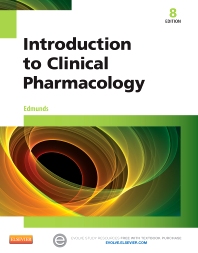
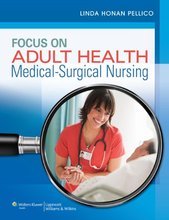
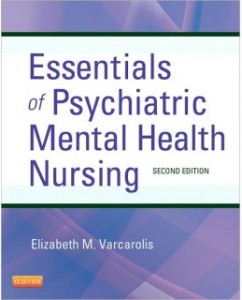
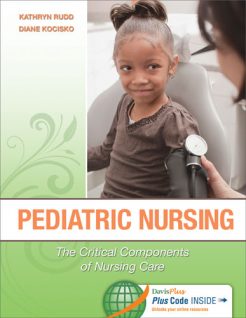
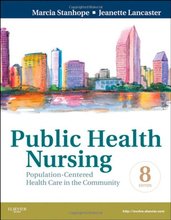

Reviews
There are no reviews yet.